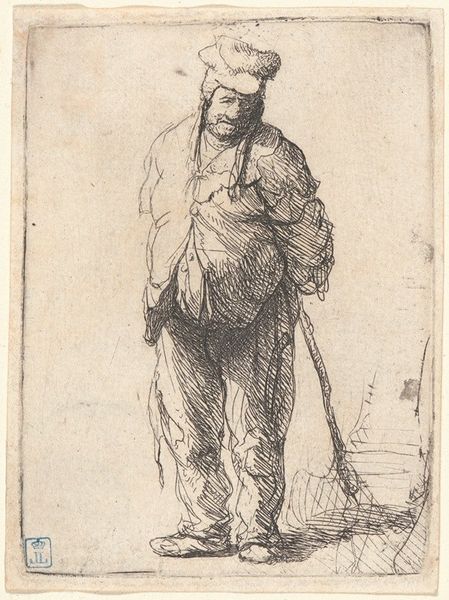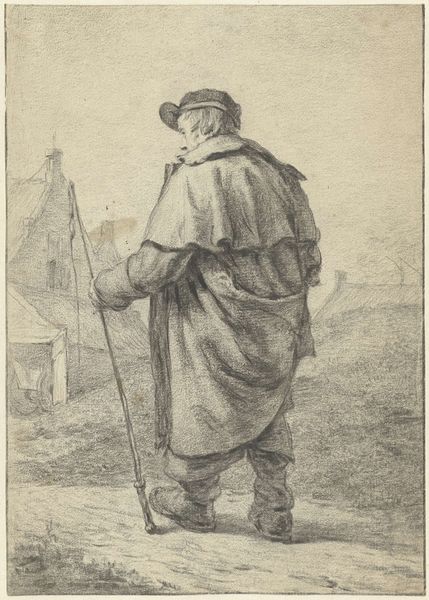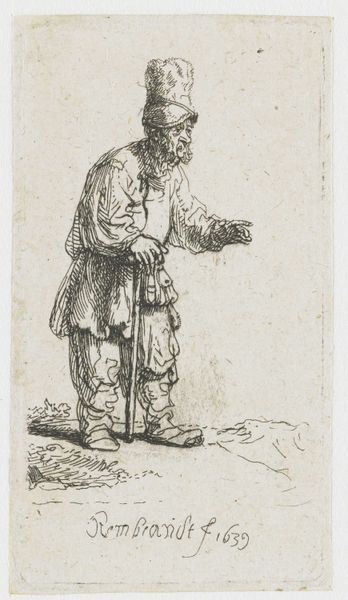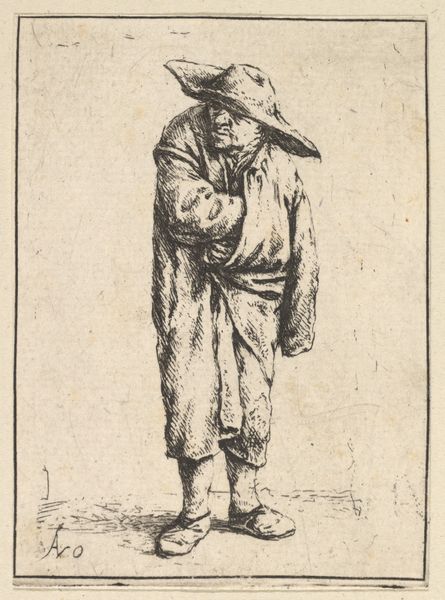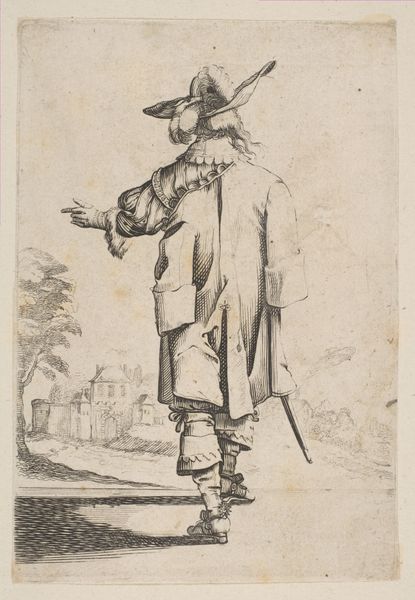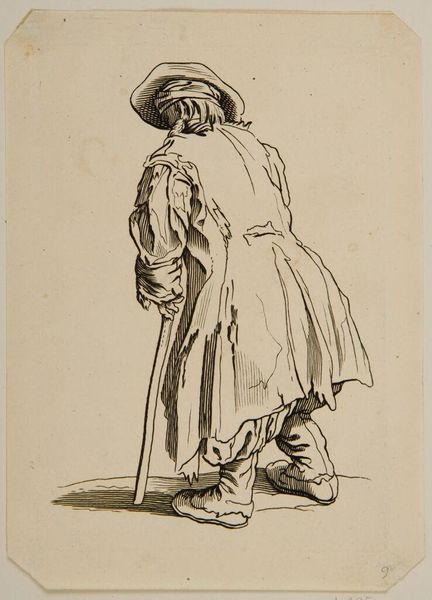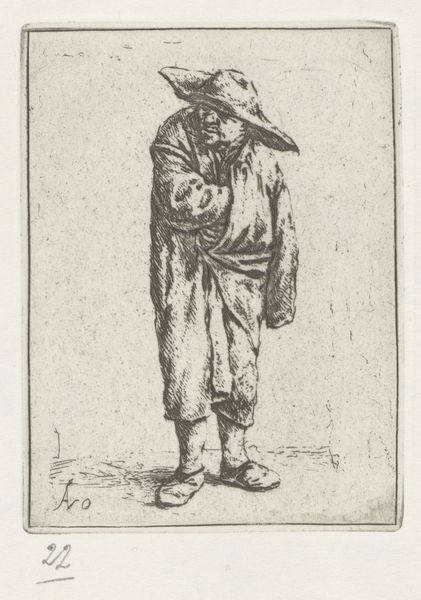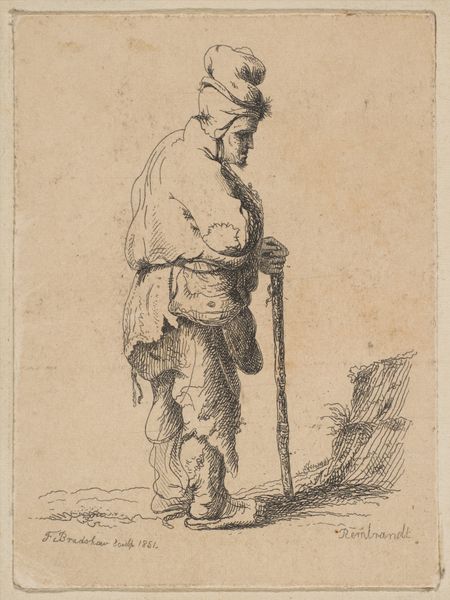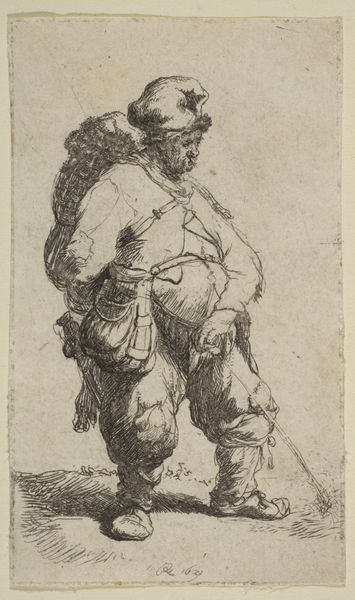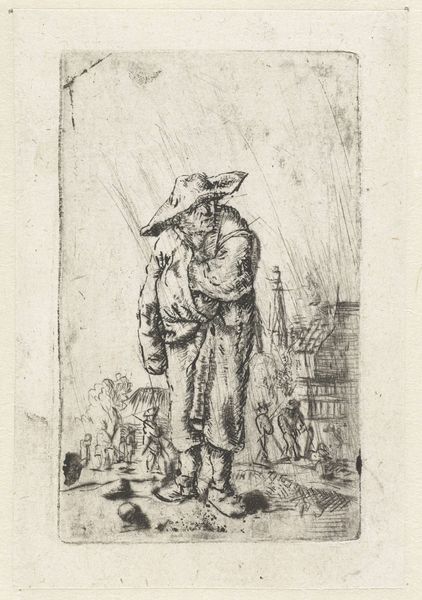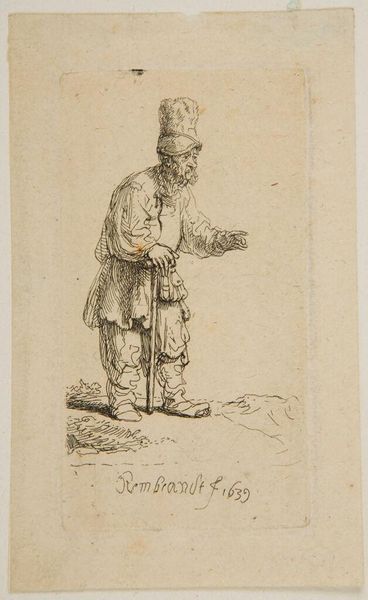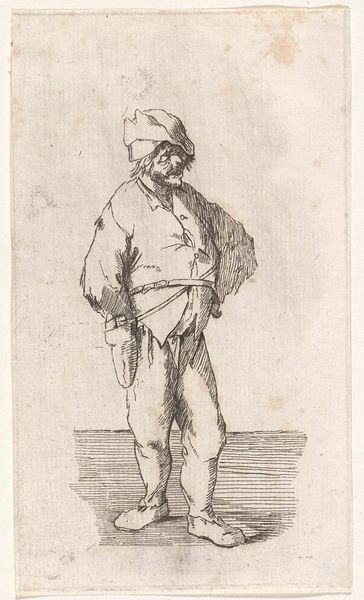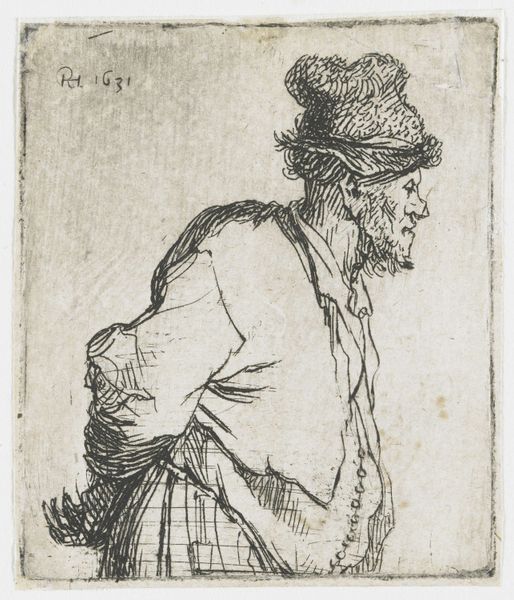
print, etching
#
portrait
#
dutch-golden-age
# print
#
pen sketch
#
etching
#
landscape
#
figuration
#
genre-painting
Dimensions: height 66 mm, width 55 mm
Copyright: Rijks Museum: Open Domain
Curator: This etching, dating from the 17th century, is entitled "Zeeman," attributed to Jan Thesingh. Immediately, I am drawn to the somber tonality despite the nautical backdrop; it’s as if the subject is weighted down, disconnected from the implied freedom of the seascape. Editor: The line work itself reinforces that sentiment. Observe the layering of strokes creating a density around the figure’s lower half—rooted, grounded. Notice how that contrasts to the comparative openness, the sketched lightness of the ships on the horizon. It really anchors our understanding of the figure’s position both visually and psychologically. Curator: A compelling reading! Expanding this, Thesingh’s emphasis on detail—look at the texture he coaxes from the etching medium when depicting the folds of the figure's clothing. One could argue that, beyond mere representation, this is a study of societal stratification made visible through the very material rendering. The man seems worn but not bereft of dignity, positioned but also isolated within his landscape. Editor: Precisely! Think of the power structures at play during the Dutch Golden Age. A seemingly simple maritime portrait becomes an entry point to understanding labor, trade, and individual place. What stories does this figure hold, positioned precariously between land and the implied possibilities represented by the ships? The clothing does not speak of riches, and there is almost an anonymity created by the turn of the figure's body away from the viewer. What does Thesingh, a name now largely obscure, aim to portray? Curator: Your point on the artist's obscured name underscores how the subject, too, fades against a broader historical canvas. Still, his figure commands formal attention through the strong diagonal line slicing upward through his frame which pushes against the open horizontal sea behind. His humanity is contained but, importantly, presented as form. Editor: It’s through these contrasts—the grounded vs. the mobile, detail against openness—that we can begin unpacking layered social meaning as much as artful intent in this compact, quiet composition. It is quite remarkable. Curator: I find this detailed look truly enriches this subtle portrait. Thank you! Editor: My pleasure; perspectives change everything!
Comments
No comments
Be the first to comment and join the conversation on the ultimate creative platform.

